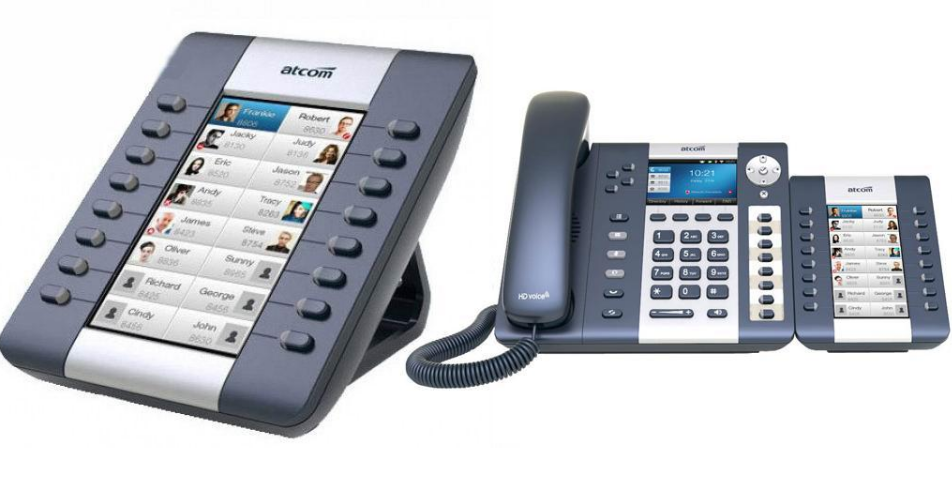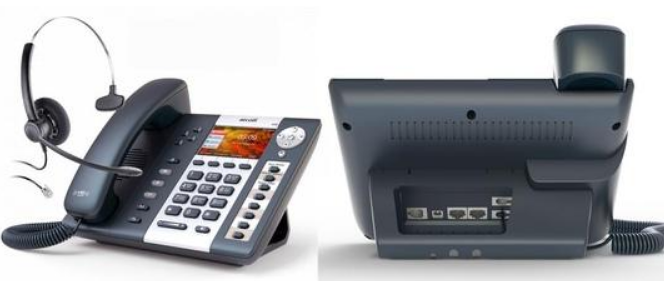SIP telephony - what is it?
SIP telephony: what is it?
City phones, rotary phones, payphones, thick directories in which you had to look for the numbers of the necessary subscribers, organizations - all this is a thing of the past. Standard communication lines have been replaced by more advanced technologies that remove many restrictions, ensure maximum signal transmission range, preserve its purity, clarity, intelligibility.
One of these technologies is SIP telephony. What are its features? What advantages does it give to users, be they individuals or commercial enterprises? How to use its capabilities correctly?
Analysis of the concept
SIP is inextricably linked with IP telephony, however, these terms cannot be equated. In the first case, we are talking about a specific protocol, in the second case, about the technology within which this protocol can be used along with others, for example, MGCP. A suitable parallel is cars. In this comparison, IP is Toyota, that is, a whole brand, and SIP is Camry, a specific model.
The English abbreviation stands for “session initiation protocol”, which can be translated as “session establishment protocol”. This quite accurately characterizes its functionality: subscriber registration, timely start and end of a conversation.
Operating principle
The algorithm of SIP telephony is as follows:
- Transmission of a voice message to the caller using the appropriate device or specialized software that supports the protocol;
- Recording the message with codecs, converting it from analog to digital form, compressing it to reduce the load on the channel, saving traffic and bandwidth;
- Transferring information to the receiving device;
- Connecting devices using IP addresses, numbers;
- Reverse data conversion, due to which the digital stream is converted into intelligible speech.
Telephony structure
Interaction between subscribers in modern telephone networks is carried out according to the “client-server” principle. The main elements that form the structure are as follows:
- Terminals. Subscriber devices that receive and make calls. It is permissible to use both specialized phones that support the protocol and regular Android smartphones, where the corresponding application was previously installed.
- Proxy server. The task is to receive subscriber requests, process them, correctly distribute calls, eliminating the overload of communication channels.
- Forwarding server. Necessary to establish communication with a specific subscriber.
- Geolocation detection server. It is used when the subscriber moves so that his network address remains available.
The basic requirement for the correct operation of the entire SIP telephony structure is a stable connection to the Internet. High speed is not required - 100 kilobits per second is quite enough. The purchase of equipment is also not mandatory. To evaluate all the advantages of the technology, it is enough to conclude an agreement with the provider, connect to a virtual PBX.

Hardware and software complex
SIP telephony does not require the purchase of special devices. To save money, you can use standard phones connected to IP gateways with network access, personal computers, laptops or even mobile devices, tablets and smartphones with the appropriate software, SIP clients, softphones installed.
Recommendations for selection
Small companies forced to spend their budget as rationally as possible do not need to invest in SIP infrastructure. It is better to limit yourself to standard office equipment, computers with installed applications, and for employees who regularly go on business trips, working outside the office - smartphones.
Of course, larger companies and call centers are recommended to use more serious technical means, including specialized SIP phones that support conferences and video calls, allowing you to activate the desired function with one click. The price of the equipment is quite high, however, it is justified by the functionality, convenience for the operator, and maximum reliability.
Application areas
SIP telephony is 100% suitable for any organizations whose work specifics involve constant remote interaction with clients, customers, business partners, and is impossible without timely resolution of business issues. First of all, the following enterprises should be noted:
- Commercial organizations, offices of various sizes and focuses. SIP helps to establish communication not only between employees and clients, but also ensures correct interaction between all departments and agencies.
- Call centers. A well-established system allows such enterprises to confidently handle the largest volumes of calls, guarantees their clear, accurate routing and addressing.
- Small developing companies. When using a virtual PBX, the implementation of SIP does not require significant initial investments, the purchase of hardware modules. At the same time, the system can be easily improved along with the development of the business.
Advantages
The main reason why businesses are increasingly paying attention to SIP telephony is the ability to optimize the budget, save money by reducing communication costs. It is enough to conclude an agreement with a proven provider, select the optimal tariff plan, balanced in price and a set of services. There is no need to invest in the purchase of equipment, hire service personnel who will monitor the serviceability of the equipment, configure it - all this is the responsibility of the provider.
Other significant advantages of the new communication format are as follows:
- Ease of modernization. If the business has “outgrown” the system, it no longer meets its needs, it is easy to expand. You can add both individual numbers and entire communication channels.
- Mobility. SIP eliminates the need to be tied to a specific point, place, or stationary device. Employees can continue to use telephony on business trips; when the organization moves, all numbers and, consequently, the established client bases are preserved.
- Communication quality. Speech is transmitted clearly, without interference, jamming, or distortion. This qualitatively distinguishes SIP from analog lines, where the signal is subject to even minimal external influences, radio interference, and electromagnetic fields.
- Efficient call forwarding. Its configuration is as variable as possible. For example, if the manager is not at work, the client's call can be redirected to his personal number, or transferred to a voice assistant. Many other scenarios are also supported.
- Interaction with any numbers. Operators make and receive calls from all numbers, landline and mobile, regardless of geographic location.
- Start-up speed. SIP telephony can be used immediately after concluding an agreement with the provider.

Additional functions
The abundance of auxiliary functions should also be attributed to the category of advantages of modern technology, however, they should be analyzed in more detail - too many. The greatest value for business is the ability to synchronize with IT systems, enterprise information databases, CRM, which automates the work of the sales department, management and other specialists who have to constantly be in contact with clients.
After synchronization, a lot of opportunities open up, including:
- Recording conversations to determine whether employees comply with the scenario of interaction with the client, their professionalism, and responsible attitude to job responsibilities. Some managers do not personally analyze dialogues, do not assign this to subordinates, but implement artificial intelligence systems that are as accurate and impartial as possible.
- Automatic opening of a client card upon an incoming call. The manager immediately understands who he is dealing with, sees orders, potential questions, and the interlocutor's requirements. This improves the overall quality of service.
- Keeping a "log" of calls. As in the case of dialogue recordings, analyzing logs helps improve discipline, eliminates failure to fulfill plans, absenteeism, and other violations that negatively affect the company's financial performance.

Alternatives
SIP is not the only protocol suitable for Internet telephony. One of the closest analogues is H.323, however, it is considered outdated, is much inferior to modern developments in terms of convenience, variability of settings, and is not very suitable for transmitting large multimedia files. If the enterprise is acutely faced with the problem of saving traffic, unloading communication channels, a good choice would be the IAX2 protocol, developed specifically to solve this problem.
Summing up
SIP telephony, like other technologies that allow making voice calls over the Internet, is extremely convenient, meets business needs, helps to bring profitability and the status of the enterprise to a new level.
SIP is the most reliable and universal protocol, the capabilities of which are not limited to voice calls alone. It is suitable for transmitting text messages, multimedia files, and holding mass conferences.
Answers to popular questions
How soon can I start using the service?
The user account is opened immediately after the application is submitted.
Immediately after making the payment, you can start using the service immediately.